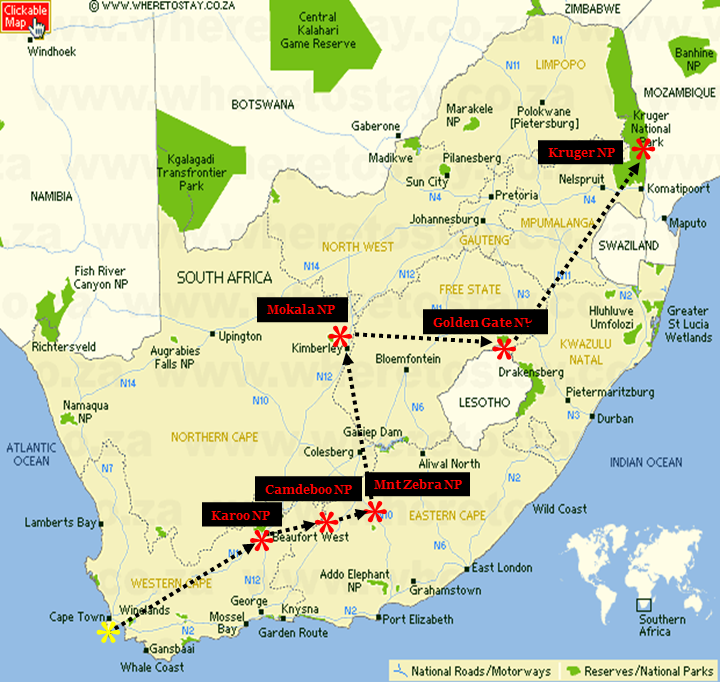
WARNING – this post is a long one as I have a lot to report on given it’s my first day in Kruger National Park.
By the way, I finally was able to upload the videos of the Green Dragon in case you are interested – see the Vehicle page on this website.
Before introducing Kruger and showing you some fun wildlife observations, I want to share one unrelated observation. The southeastern entrance to Kruger where I was entering the Park is very close to the Mozambique border. Due to the inefficiency of the border post, the coal trucks on the South African side of the border on the major highway I was traveling on were backed up in a line that extended at least 10 miles, I kid you not. At the pace they were moving it would take several days, at least, for a truck to get across the border. Why they are moving all this coal via truck and not train, when there is a track along this route, is beyond me. Fortunately, I was able to simply skirt around the procession and proceed on my way.

Ok, let’s introduce the iconic Kruger National Park, the flagship Park of South Africa located in the northeastern corner of the country bordering Mozambique and Zimbabwe. Kruger NP (7,576 sq mi), established in 1926, is both the 1st national park established in South Africa as well as the largest in the country, and the 6th largest national park across the entire continent of Africa. The Park is elongated north to south – extending 220 miles from north to south along the western slopes of the narrow Lubombo Mountain chain which forms the border with Mozambique and running 40 miles from east to west, on average, along its length. As a consequence of Kruger’s latitudinal and elevational gradients and varied soils derived from mostly igneous (of volcanic origin) materials, the Park supports a wide range of ecosystems and varied habitats for an exceptional array of wildlife. Kruger is an important stronghold for several of Africa’s most iconic large mammals, including supporting more than half the world’s remaining white rhinos, along with substantial populations of giraffes, buffaloes, elephants, black rhinos, leopards, cheetahs, African wild dogs and, of course, lions.
My first public campsite in Kruger is Skukuza, located in the southern section of the Park along the banks of the perennial Sabie River. The landscape surrounding this section of the Park is highly varied. To the east are the low, arid rhyolite hills of the Lebombo Mountains. The soils of the Lebombo are shallow and stony, and as this is one of the driest parts of Kruger, it is dominated by drought-resistant plants.
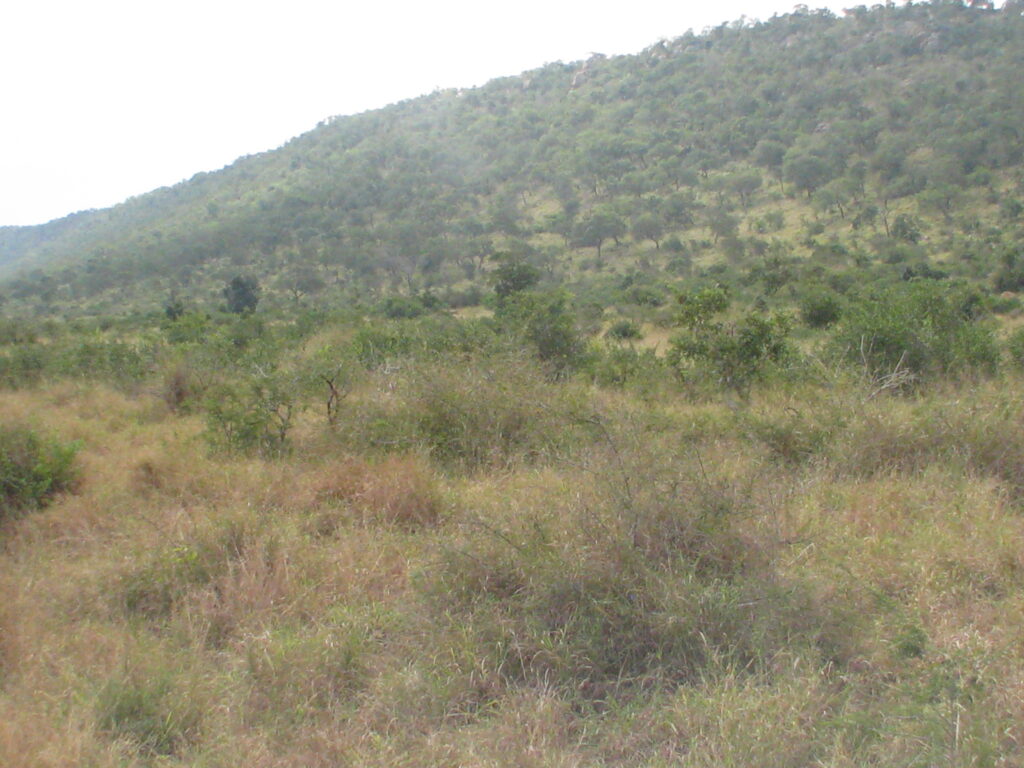
Lying west of the Lebombo hills is a rather vast open savannah grassland on basalt soils (dark, fine-grained igneous rock rich in magnesium and iron derived from extrusive molten lava). These savannah grasslands contain scattered acacia trees and form the classic picture of the African savannah.
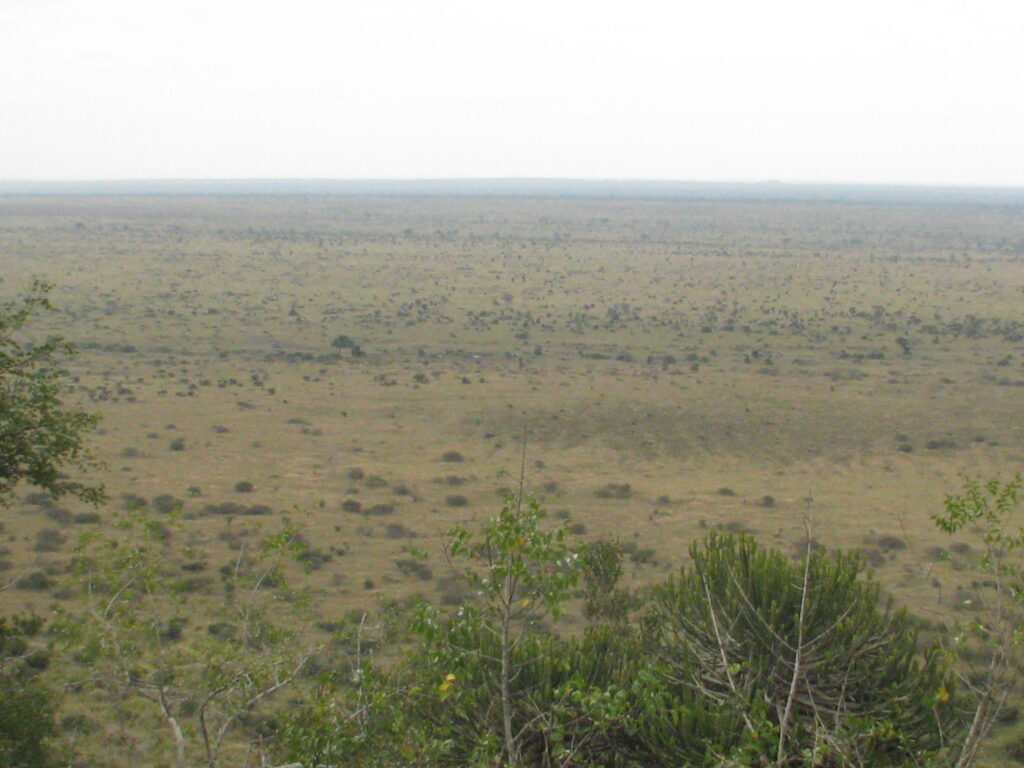
Further to the west in the vicinity of my campsite at Skukuza are areas of mixed thorn thickets and marula woodlands on granite soils (lighter, coarse-grained igneous rock rich in quartz and feldspar, also derived from extrusive molten lava).
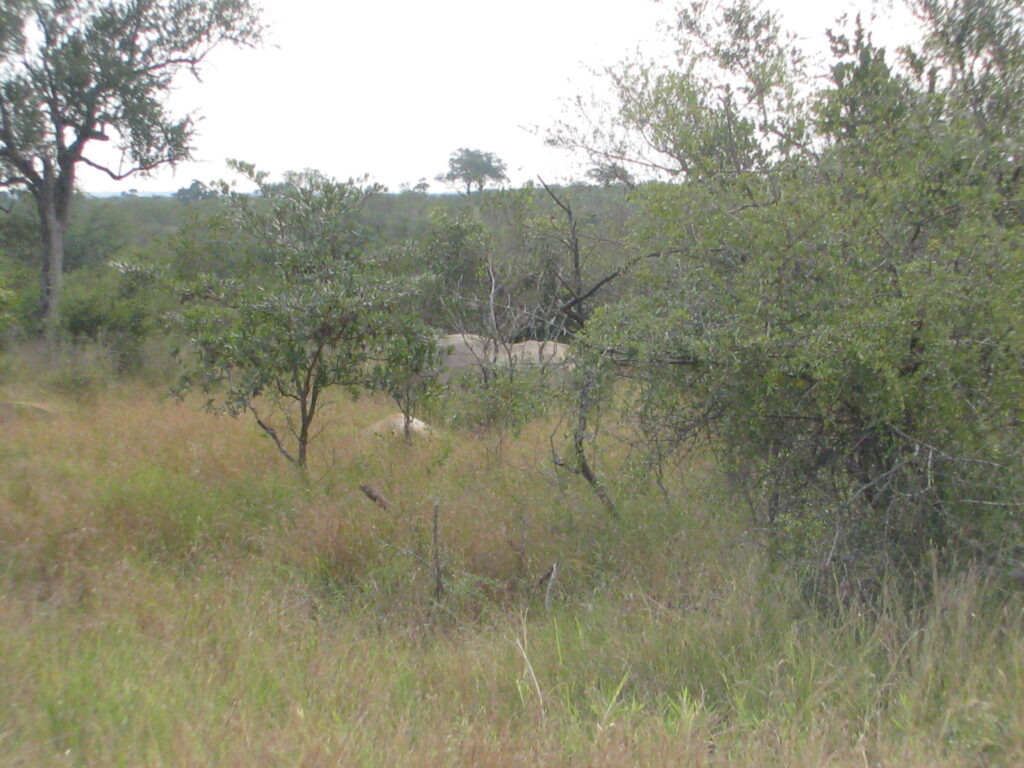
The marula tree is worth describing in more detail, as it is important for its commercial and wildlife uses, and it is an important member of what is referred to as miombo woodlands, which are the most extensive tropical seasonal woodland and dry forest formation in Africa. Miombo is found throughout west, central and east Africa and extends southward just barely into South Africa. Marula is a medium-sized deciduous fruit-bearing tree, indigenous to the miombo woodlands of Southern Africa, and it has a beautiful spreading crown.
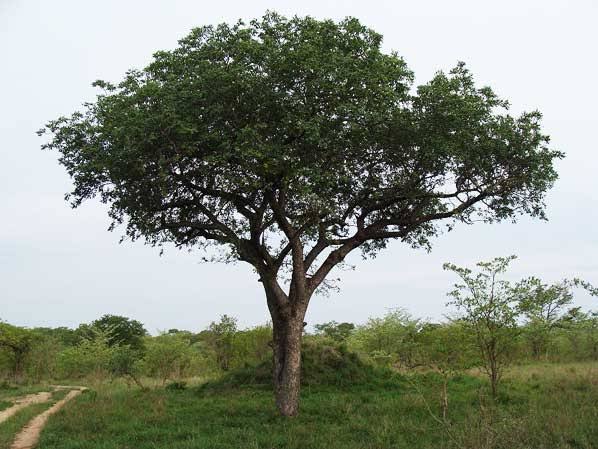
Some cool facts about the Marula tree: The marula fruit is used to make a beer and liqueur, and is used in fruit juice blends – it is sky-high in Vitamin C. In addition, the extracted nut oil is similar in its properties to olive oil, highly nutritious and exceptionally stable, with the additional benefit of having powerful antioxidant properties, and it is used as an ingredient in cosmetics (e.g., moisturizers). Locals believe it is known as “The Marriage Tree” in Zulu culture, as it is believed that those who marry beneath its branches will enjoy vigour and fertility all their days. And of course, the fruit is eaten by many wildlife species and is a favorite of elephants. Interestingly, elephants damage the trees by eating the bark and can even kill the trees by girdling, but at the same time are an important disperser of the seeds which they spread in their dung.
Ok, that’s enough on the environment of Kruger south, let’s see some wildlife. Here are some anecdotal wildlife observations from today:
Peek-a-boo, I see you!

Do you see the Rhino in the bushes?
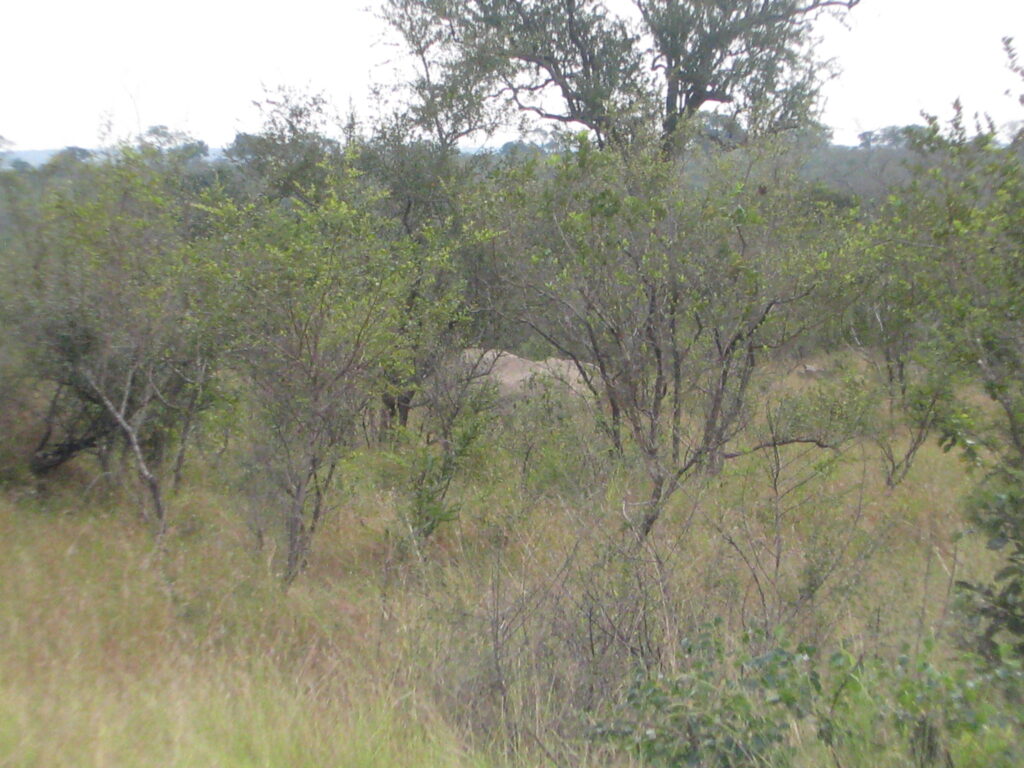
Whoops, it’s just a rock!
Let’s all cross in an orderly fasion please:
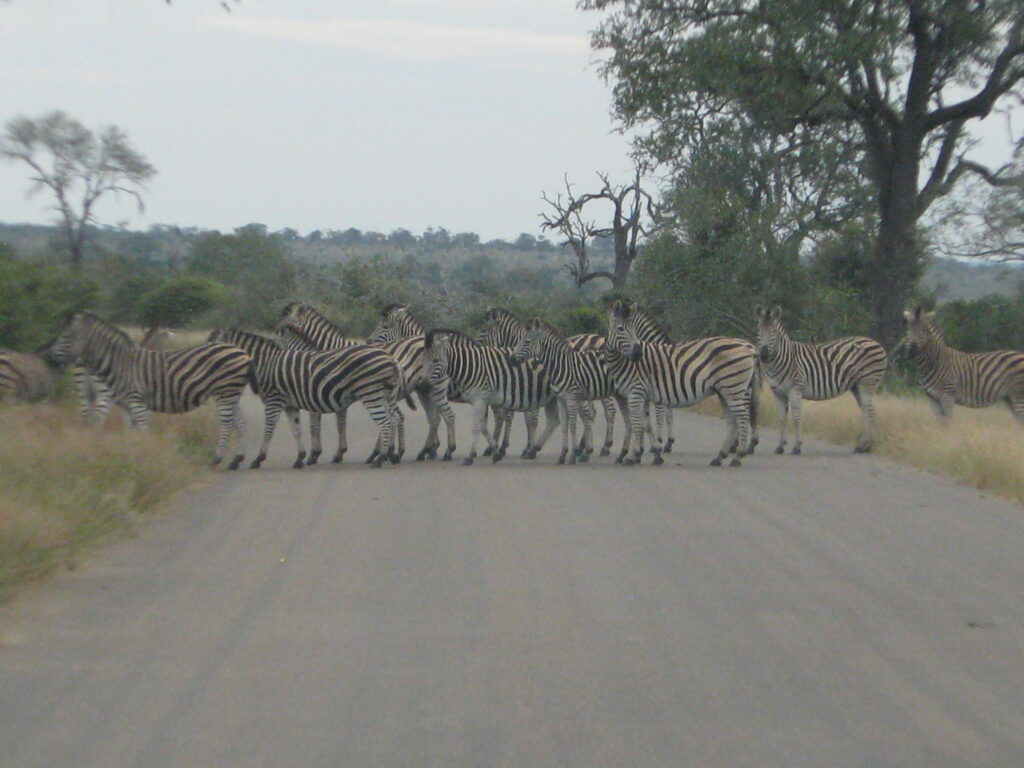
Watch out for that bison crossing the road – I mean Cape Buffalo!
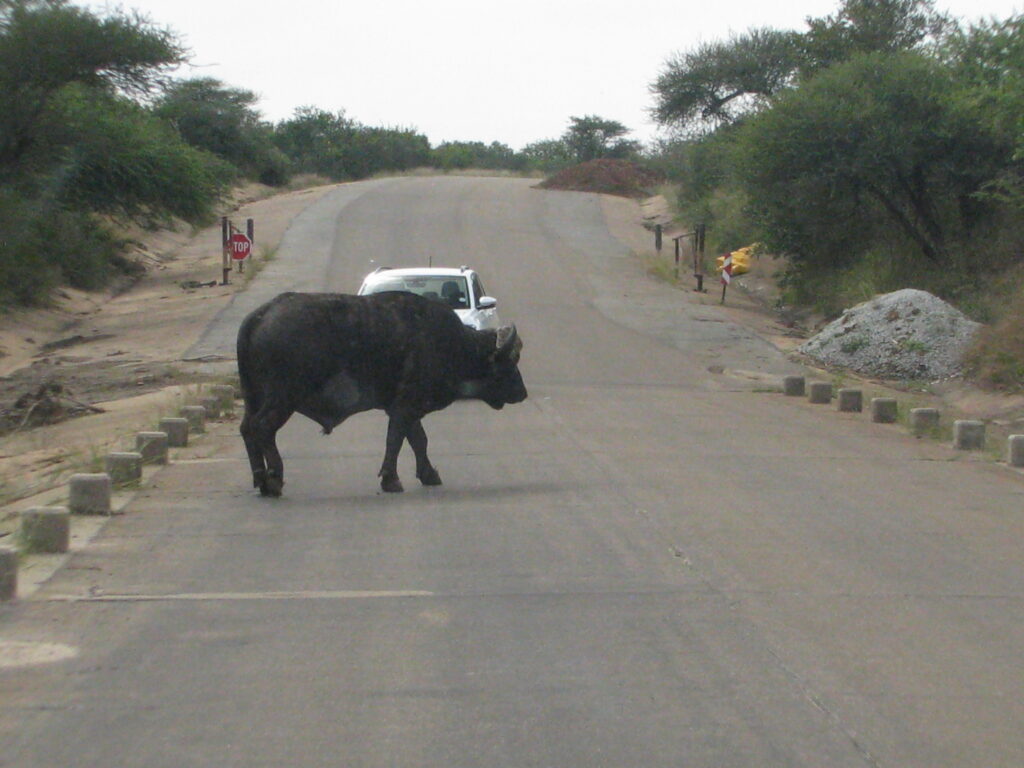
Shake that booty!

Tuppens for the poor?
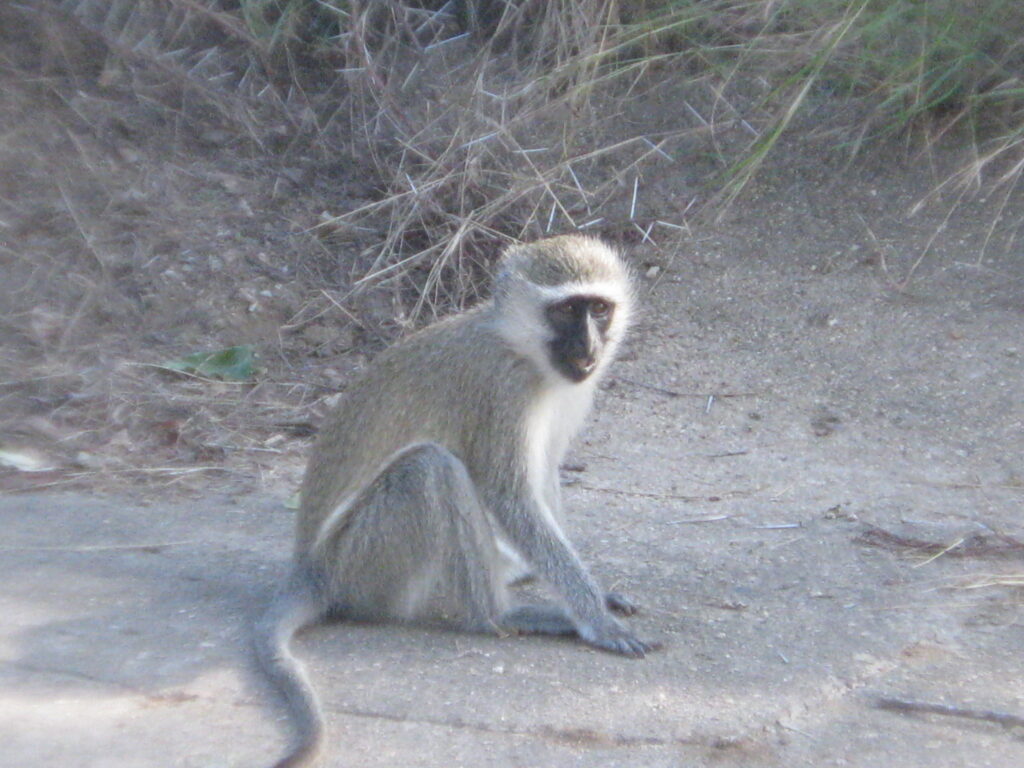
Skylar are you watching: “mommy elephant, big girl elephant, little girl elephant, and baby elephant”
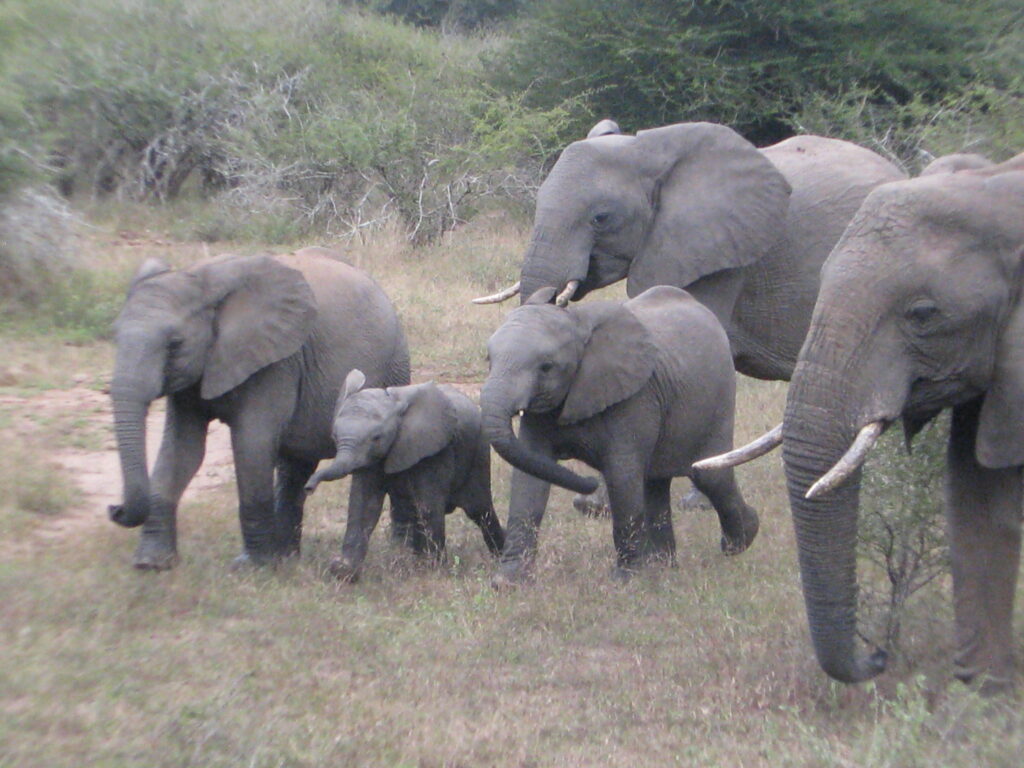
And last but not least, the species of the day – this one’s for you Sherry – is the warthog. Now how could you not love and admire this pig. They eat just about anything and everything, they live in just about any habitat in sub-saharan Africa, they run around in little matriarcal groups called “sounders” – and with their tails held high, they like to roll around in the mud to keep cool, they can burst at speeds of up to 30 mph to escape predators, and they can use their formidable tusks to defend themselves against predators such as lions, leopards and hyena’s.

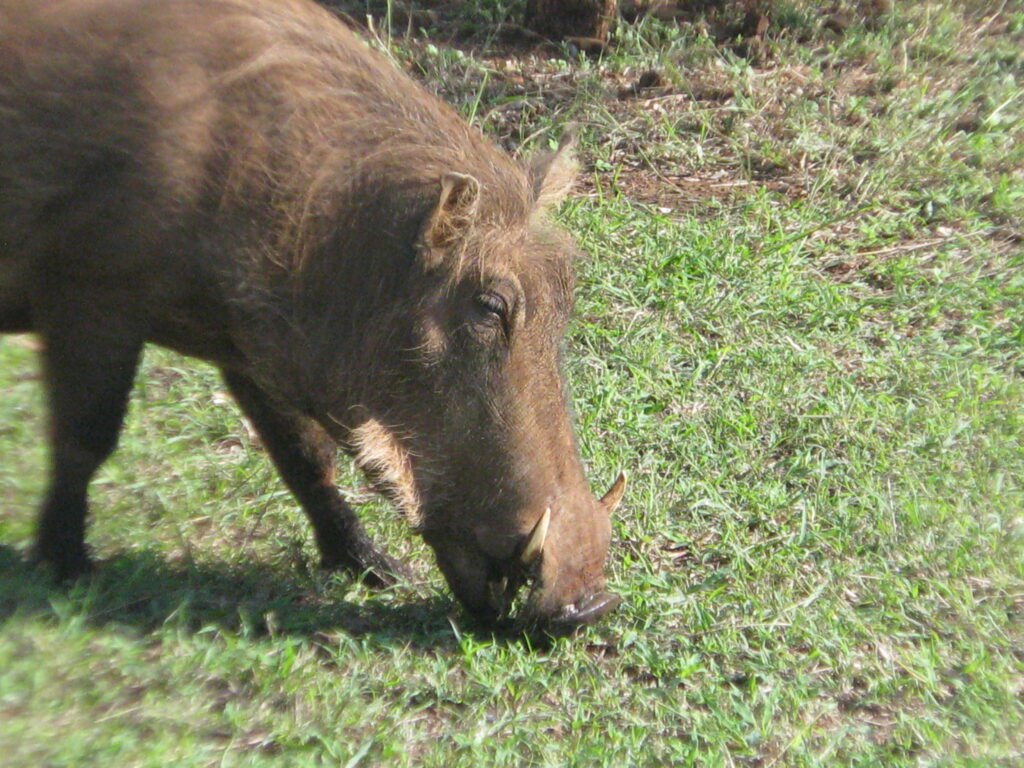
Time for bed. Goodnight all!

Ah Kruger! I remember some great times there in the long ago days of my youth. Great post and wonderful to see the animals!
Thanks buddy. Yes, Kruger is relatively good for wildlife but the Park is not really my cup of tea as it is so developed – not very wild! Cheers.
You have really put some miles behind you… the maps really help… and I trust the Toyota tracks well on the highway!
This long post was almost long enough to pop the cork on the African wine I bought! Might need to get our neighbors over to help us drink it while we discuss your trip!
That’s a stellar idea. Troopie tracks OK on highway but it really is meant for off road and I still have an alignment problem to address that makes it less than ideal on highway. Cheers.
Love those elephants! Cute baby. 👍
Great, because I have a special one for you coming up on tonights post!
oh, ok, now Skylar is jealous!
Good, because there’s lots more to come for her!
I’m getting your blog.keep it up I’m about to take a Solo trip . Unfortunately Steve was diagnosed with prostate cancer aggressive . I’m going to go to the new national park in west virginia.then the cave’s of Kentucky then what ever I feel like.. enjoy your trip
Wow, that’s awesome Brian. What are you driving and are you moteling it like you and Steve have done. Very sorry to hear about Steve! Hope he can beat it. Cheers.
I’m setting up my Toyota for truck camping 26to June 14th then Steve and I are going to Canadian maritime’s till 26 or so . I tried to get Sean to meet up with me but he is out in Oregon…. sounds like you’re having a great time
Wow, you will have to let us all know how the truck set up works. Cheers.
Glad that you made it to Kruger! What a great trip you’re having. I watched the videos of the vehicle with great interest as we are buying a pop-up topper for the Tacoma for less exciting and more local exploration than yours! https://fourwheelcampers.com/model/project-m/ But we are planning a trip to Anchorage in September. Your vehicle is FANTASTIC! and gave me many ideas for things that we need to consider for our rig. So thank you VERY much for the videos. Very helpful. Hopefully not being too indelicate but one thing that you did not mention that at least I will need in our camper is a porta-pot. Do you have such facilities or are you using more primitive methods…? Don’t feel like you have to respond to that if it is a bit TMI!
No worries, that is a very good question and one that I am struggling with. In SA parks I don’t need a porta-potty but in Botswana in one of the Parks I will and then in Zimbabwe for sure. My dilemma is that a decent one is rather large and I don’t have much extra space in the back without a hastle. Also, they can sometimes leak gases, etc, and be smelly. They are supposed to be air tight but I hear that they don’t always work as advertised. And I will be driving on some bumpy corregated roads, so I am nervious about that. I can’t decide what to do. I may resort to a hole in the ground but that is not always possible. ????????
Yeah for the Warthog making it to “animal of the day”, which is Kirsten’s favorite animal. It is fun to watch them often grazing on their front knees, which must make it easier for them to reach the low grasses at times? Folks like to make fun of the warthog as a “not-so-smart” animal that forgets what it is running away from after about 5 seconds, stops and turns to look again. Perhaps a useful evolutionary behavior??
Yes, it is sort of hillarious watching them foraging on their wrists I believe. I think it looks like the knees but may actually be the wrists. I’ll have to check on that. Cheers.
OK my BBBB (bird brained big brother). You must have birds on your brain because the updates to your mammals on your Wildlife List is lagging way behind the birds list. Just saying…
What can I say, birds are better! Not really, there’s just a whole lot more of them to see. In the end, the bird list will be 5 to 10 times or more the mammal list. Lots more to add from today too. Cheers.
Yay!! The fun loving warthog! I had a blast caring for them at the zoo! I hope you get to see piglets, it’s so hilarious the way they playfully run with their tails up then suddenly stop to spin and breakdance or head press with each other. And I was lucky enough to also work with the blesbok. Sure would like to see them in a group (we only had a pair). Nice to see you’re not starving while camping, but I understand you are quite an elaborate camping cook wherever you go. With all the crazy traveling experience, I think you deserve to pamper yourself! Keep it up! Cheers!
Yes, the warthogs are super fun to watch when in a family group and moving in a line. Re Blesbok, I saw many different herds of from a few to a couple of dozen. Cheers.
Amazing! In the first day you saw all those animals! The giraffes must love that Marula tree too. Can you pick me up some of that skin moisturiser you were talking about full of vitamin C ? 😉😁
Will try my best.
I agree with the above comment. This must be exciting seeing all those different animals in 1 day. Also noticed other cars on the road in this journey. I Know your in heaven IN THIS PARK. Love Joan
Love the warthog. Little piggy. Not exactly Wilbur, however. Ohh those poor coal drivers. Tough way to earn a living. Amazing marula fruit tree. New to me. All good.